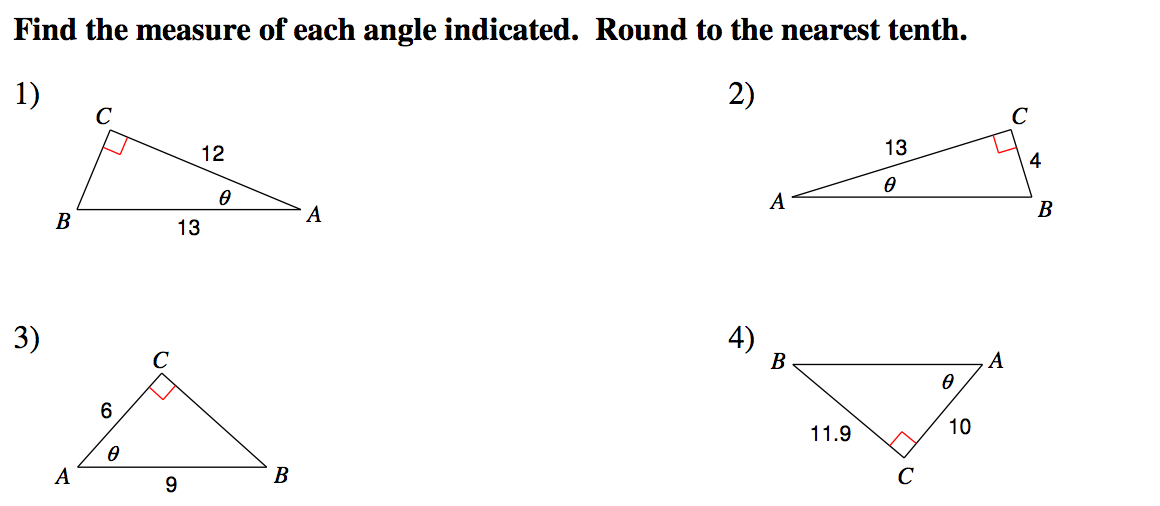Please help?

1 Answer
#theta = 22.6^@# #theta = 17.1^@# #theta = 48.2^@# #theta = 50.0^@#
Explanation:
It's time to use our new friend, SOHCAHTOA!
As a refresher, this stands for:
#"sine" = "opposite" / "hypotenuse" " "(S=O / H)# #"cosine" = "adjacent" / "hypotenuse"" "(C = A / H)# #"tangent" = "opposite" / "adjacent"" "(T = O / A)#
What does it mean? Well, in any right triangle, there are 3 sides.
Relative to one of the angles (other than the
- the opposite side (the one opposite our angle),
- the hypotenuse (the one opposite the right angle), and
- the adjacent side (the one next to our angle, but not the hypotenuse).
For example, in question (1), the angle is
What we notice is that, if we scale a right triangle up or down, the angles all remain the same, but so does the ratio of any two sides. For example, if a right triangle with sides 3, 4, and 5 doubles in size, its sides become 6, 8, and 10, but the ratio
So for any right triangle, scaling the whole triangle doesn't change either the angles or the ratio of any two sides. It's like they're linked; an angle determines a ratio, and vice versa. How cool is that?! It's so cool, we write a relation between the angle
The pair "opposite to hypotenuse" gets the name sine, and we define it as
Finally, the answer!
In question 1, we're given an angle
#cos theta = "adj"/"hyp"=12/13#
So we know the cosine of
Using this "inverse cosine" function, we get
#costheta = 12/13#
#=>theta = cos^"-1"(12/13)~~22.6^@#
I'll leave the calculation of the other

